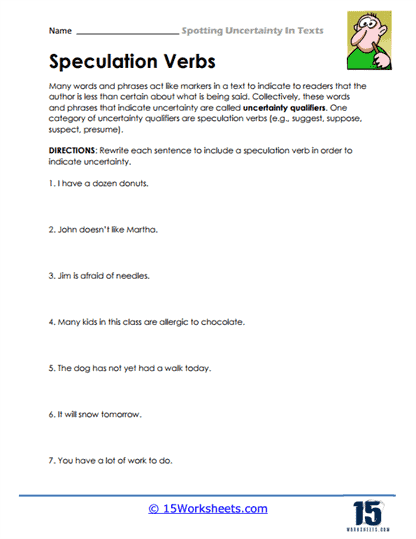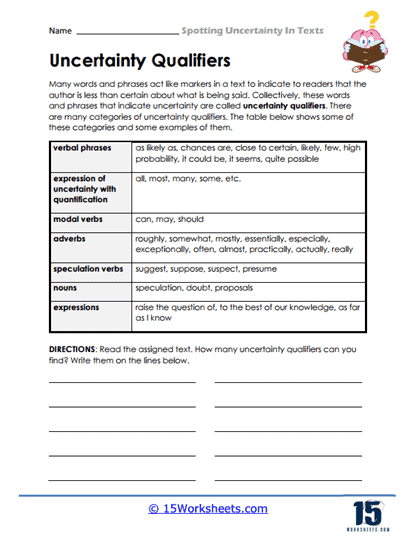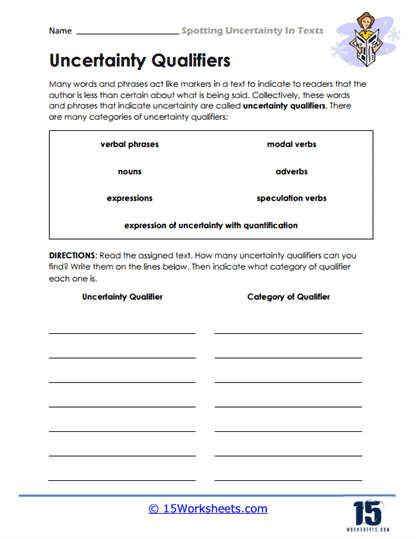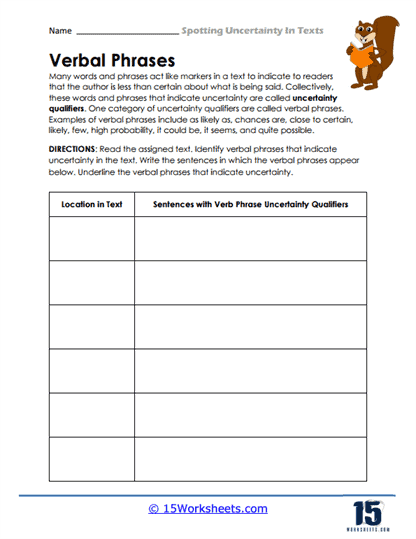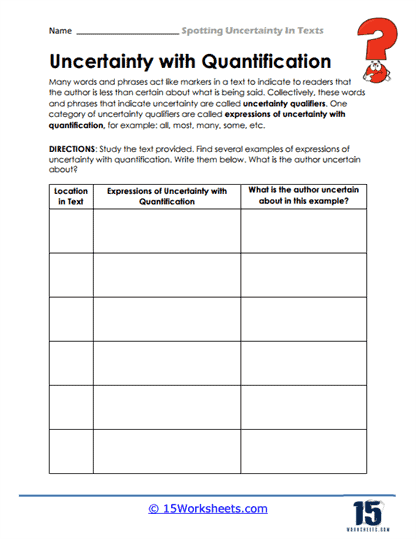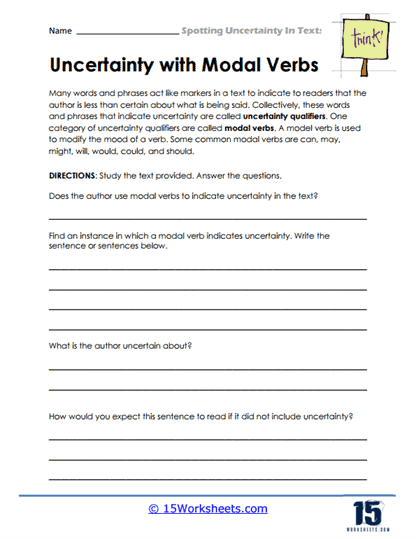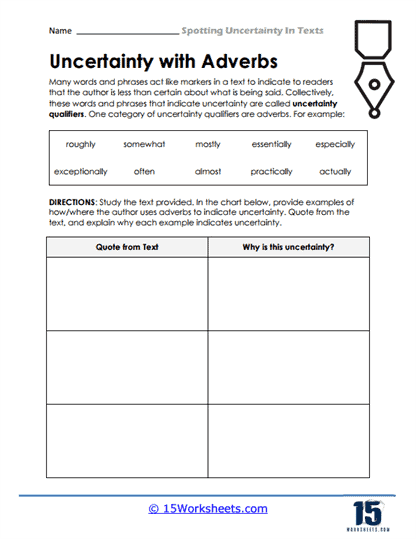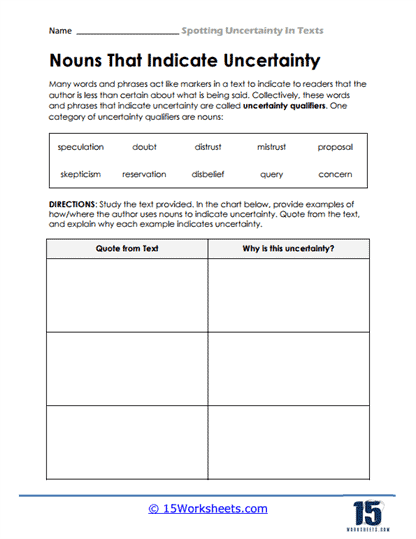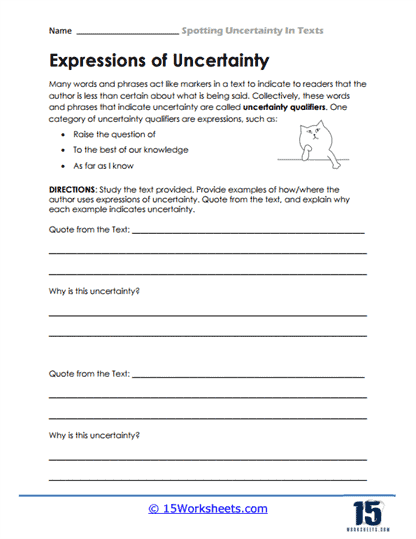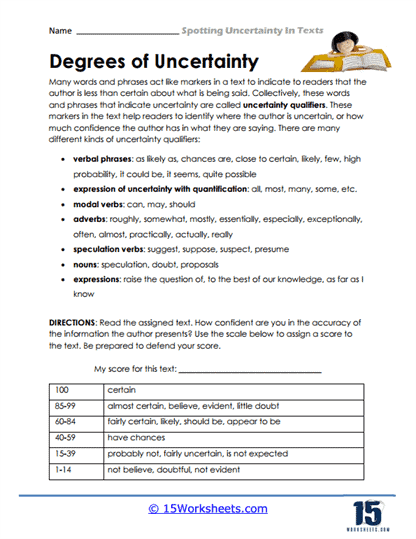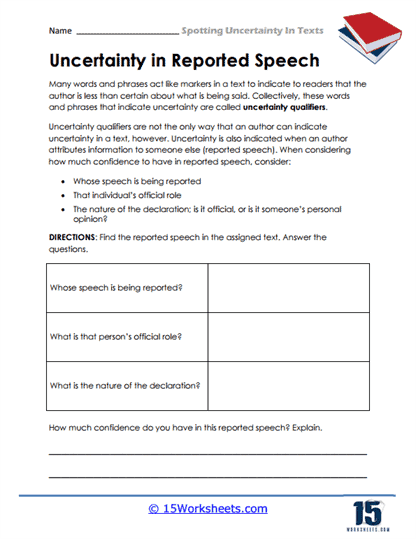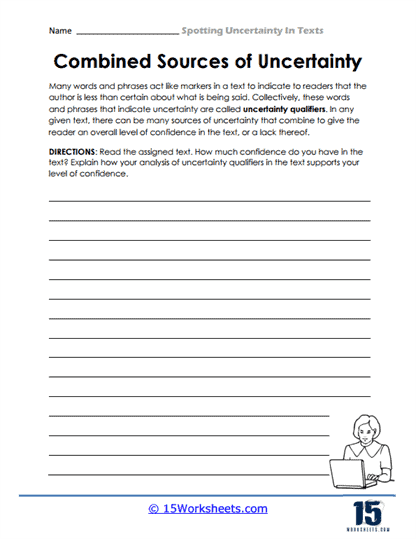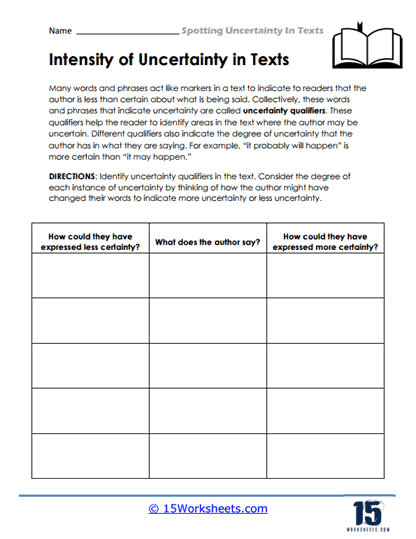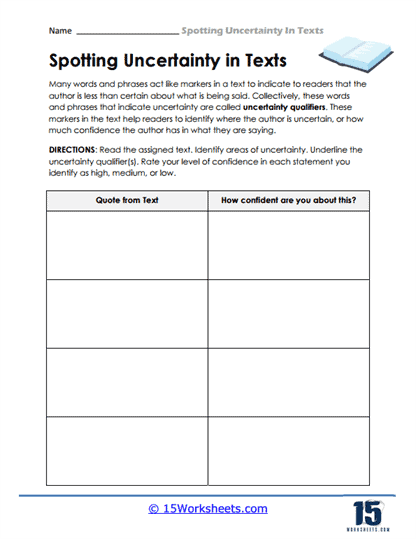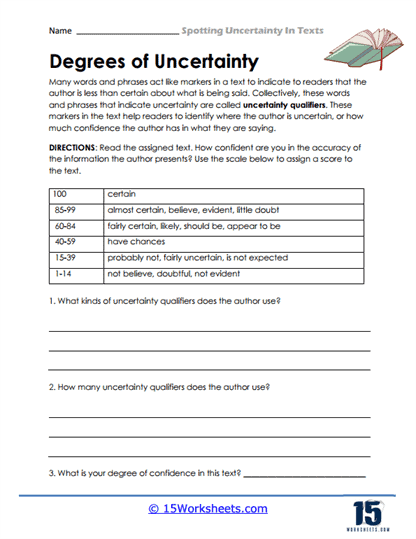Spotting Uncertainty In Text Worksheets
All About These 15 Worksheets
Welcome to the “Spotting Uncertainty In Text” collection, a series of 15 engaging reading worksheets designed to enhance students’ ability to identify and comprehend uncertainty in text. These worksheets are tailored to improve critical reading skills and promote a deeper understanding of the nuances present in written material.
Evaluating Uncertainty in Text
The ability to describe, characterize, and manage uncertainty is a critical component of success. But, with textual materials abound on the internet, obtaining reliable information is not that easy, especially when it comes to numbers and figures.
Why is it Important?
So, why is it important to evaluate uncertainty in the text? In many disciplines, such as medical or finance, precise and complete extraction of information and knowledge is still required to understand the significance of clinical reports or to assess market trends.
One of the many reasons we enjoy history is because it gives us the feeling of traveling through time. Reading historical records is the closest we can go until some brilliant scientist discovers a means to truly travel across time. We can encounter famous persons who have long ago passed away via historical literature. They may be able to show us how they saw the world.
How can we be convinced that certain historical events occurred as people claimed? Today, we have footage, audio recordings, and data such as GPS and phone records to assist us authenticate events that occurred recently. When we travel further back in time, before current l technologies were invented, we just have books. Because these documents are authored by persons with varying intentions, historians must consider these aspects when interpreting the events and acts depicted in historical texts.
Watching a historical documentary or reenactment is not the same as reading historical materials. Texts appear to depict the world as it is, but we must remember that they are written from a specific point of view and for a specific purpose. Authors sometimes express bias, or personal opinions regarding sensitive themes, in their writing without realizing it. Understanding a historical document as a picture of the world necessitates an understanding of how the picture is framed from the author’s point of view.
This is particularly true in the case of political subjects. Take, for example, the Declaration of Independence. The founding fathers felt persecuted by the British government and declared that their new American government would promote freedom. The reader is swept away by its cry of liberation. We bring our unique viewpoint to the table as time travelers by asserting that all free males silenced the voices of those who were enslaved.
History’s most powerful personalities tell their stories from a specific point of view. It’s our responsibility to find the holes in their narrative . There isn’t such a thing as a completely objective report. If I asked you to explain what happened in a renowned historical event, you would most likely do it from your own point of view.
To contextualize the incident, you would draw on your personal experience. After all, this is how we make sense of the significance and meaning of contemporary events. Can you imagine someone being fully objective about an incident they witnessed firsthand?
So, what are some reading methods that you may employ while reading historical texts?
Determine The Target Audience
Keep in mind that the author is unlikely to be writing to us. We are living in the twenty-first century. Consider who the text was originally written for and how they might have responded. Thomas Jefferson was speaking to a nation on the verge of becoming independent. He desired to contact people who shared his desire to break free from the British Empire.
The Author
Consider the author’s voice when identifying the author. Their point of view is woven throughout the writing and may give the impression of bias.

